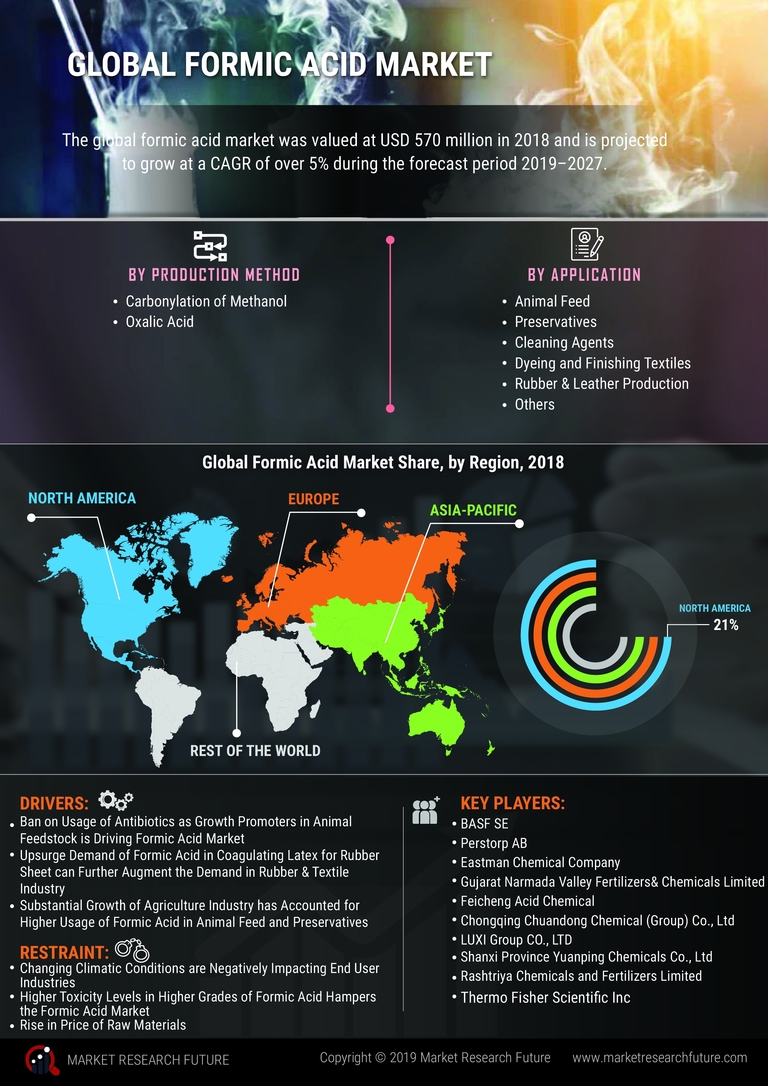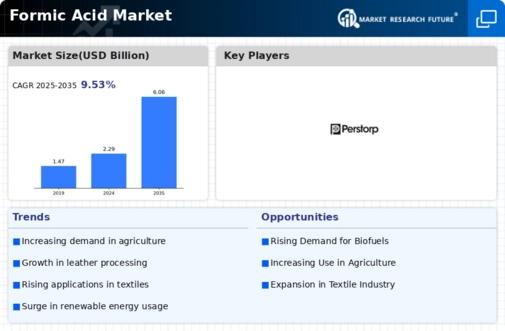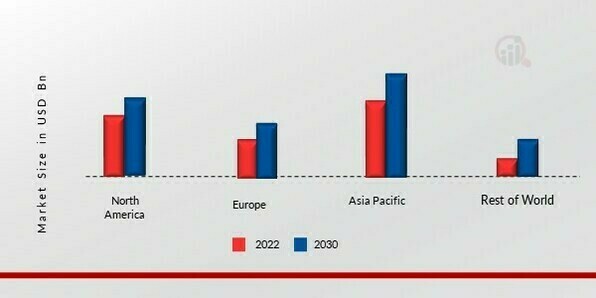Growth in Leather Processing
The leather industry significantly contributes to the Global Formic Acid Market Industry, utilizing formic acid in the tanning process. This chemical aids in the preservation and treatment of hides, enhancing their durability and quality. As the global demand for leather products continues to expand, particularly in emerging markets, the consumption of formic acid is expected to rise correspondingly. The market's growth trajectory indicates a potential increase to 6.06 USD Billion by 2035, driven by the leather sector's ongoing evolution and the need for high-quality materials.
Rising Demand in Agriculture
The Global Formic Acid Market Industry experiences a notable surge in demand from the agricultural sector, primarily due to its application as a preservative and feed additive. Formic acid enhances the nutritional value of animal feed, which is increasingly vital as global meat consumption rises. In 2024, the market is projected to reach 2.29 USD Billion, reflecting the growing reliance on chemical solutions in agriculture. Additionally, the increasing focus on sustainable farming practices may further bolster the demand for formic acid, as it is considered a more environmentally friendly alternative to traditional preservatives.
Market Trends and Projections
Increasing Use in Textile Industry
Formic acid plays a crucial role in the textile industry, particularly in dyeing and finishing processes. The Global Formic Acid Market Industry benefits from the rising demand for synthetic fibers, which often require formic acid for effective processing. As fashion trends evolve and the global population grows, the textile sector is likely to expand, thereby increasing the need for formic acid. This trend suggests a robust growth rate, with a projected CAGR of 9.25% from 2025 to 2035, highlighting the chemical's integral role in modern textile manufacturing.
Advancements in Chemical Manufacturing
The Global Formic Acid Market Industry is poised for growth due to advancements in chemical manufacturing processes. Innovations in production techniques, such as more efficient synthesis methods, are likely to reduce costs and enhance the quality of formic acid. As industries seek to optimize their supply chains and improve product offerings, the demand for high-purity formic acid is expected to rise. This trend may lead to increased market penetration and expansion, further solidifying formic acid's position in various applications across multiple sectors.
Regulatory Support for Sustainable Chemicals
Regulatory frameworks increasingly favor the use of sustainable chemicals, positively impacting the Global Formic Acid Market Industry. Governments worldwide are implementing policies that promote environmentally friendly alternatives, encouraging industries to adopt formic acid as a safer option. This regulatory support is likely to drive demand, as companies seek to comply with stringent environmental standards. The market's growth potential is evident, with projections indicating a significant increase in value as industries transition towards greener practices, aligning with global sustainability goals.



